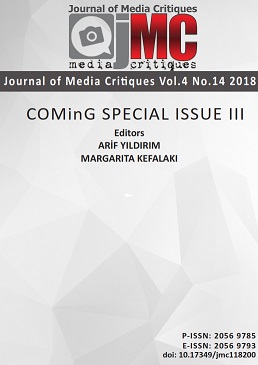A Mobile Cloud Computing Collaborative Model for the Support of On-Site Content Capturing and Publishing
A Mobile Cloud Computing Collaborative Model for the Support of On-Site Content Capturing and Publishing
Author(s): Nikolaos Vryzas, Efstathios Sidiropoulos, Lazaros Vrysis, Evangelia Avraam, Charalampos DimoulasSubject(s): Media studies, Semantics, Social Informatics, ICT Information and Communications Technologies
Published by: University of Lincoln and World Experience Campus Foundation
Keywords: Mobile media; news-reporting; cloud computing; content management; media semantics;
Summary/Abstract: The current paper investigates the design of a collaborative Mobile Cloud Computing model to support the workflow of collecting, editing and publishing news reporting material, aiming at better managing technology and human resources. While semantic services and tools have made tremendous progress in both academic and applied level, journalists don’t seem to make the most of contemporary technological possibilities. With the proposed framework, journalists, reporters, technical experts and editors can cooperate remotely and simultaneously on the cloud, collaboratively producing and publish timely, authentic and high-quality content, with proper documentation. Context- and location-aware semantic metadata, provided by mobile devices, guide the field reporter, while also serving annotation and authentication purposes. State-of-theart mobile publishing tools are used for capturing and processing multimodal assets, which are then uploaded to the cloud. Augmented interaction tools (speech-to-text, voice commands, etc.) can boost usability to overcome the functional constraints of mobile devices, thus facilitating reporting services and improving the overall media experience. Technologists /expert collaborators monitor the process to meet the quality standards posed by the news reporting team or organization. The adopted human-centred design aims at serving the needs of modern journalists, concerning functionality and effectiveness, promoting their professional development through in-service training. This is succeeded with the implementation of rapid /pilot prototyping and evaluation cycles, in which the project is progressed, leading to the suggestion and the adoption of best practices, within the scope of further automating news reporting procedures.
Journal: Journal of Media Critiques
- Issue Year: 4/2018
- Issue No: 14
- Page Range: 349-364
- Page Count: 16
- Language: English

